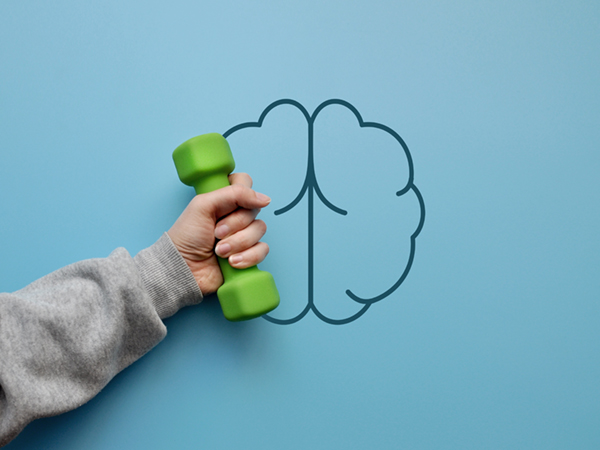It’s no secret exercise is good for your body—but what about your brain?
Linda Overstreet-Wadiche, Ph.D., professor in the Department of Neurobiology and vice chair for Faculty Affairs and Development, says both human and animal studies show that exercise can significantly improve many aspects of brain function, including cognitive abilities like attention, executive function, and memory.
“Exercise enhances synaptic connectivity and plasticity,” she explains. “That means it helps the brain remain adaptable which is essential for learning and memory.”
This summer, as you spend more time outdoors and engage in physical activity, you can boost your brain health.
Exercise and brain function
Regular physical activity offers numerous benefits for your body, like improving heart health and strengthening muscles and bones. But did you know that exercise can also benefit the brain in many powerful ways?
Overstreet-Wadiche explains that exercise boosts a special protein in the brain called BDNF, which helps brain cells stay healthy, grow, and form new connections. It also improves blood flow in the brain and helps it use energy more efficiently.
Most importantly, exercise strengthens the connections between brain cells, called synapses, and keeps them flexible. This flexibility, known as “plasticity,” allows the brain to keep adapting, which is key for learning new things and forming memories.
Exercise is also known to help the brain handle stress better by building resilience, making it easier to recover from stressful situations.
How exercise impacts the hippocampus
 Linda Overstreet-Wadiche, Ph.D.The hippocampus is a small, curved part of the brain that plays a major role in forming and storing memories. Many conditions that affect memory, like aging and depression, can cause the hippocampus to shrink.
Linda Overstreet-Wadiche, Ph.D.The hippocampus is a small, curved part of the brain that plays a major role in forming and storing memories. Many conditions that affect memory, like aging and depression, can cause the hippocampus to shrink.
Overstreet-Wadiche explains that this shrinkage doesn’t always mean brain cells are dying—in many cases, it results from the loss of connections between brain cells. These connections are essential for communication between neurons and take up space in the brain. When fewer connections are present, the hippocampus can shrink, even if the brain cells themselves are still intact.
However, exercise has been shown to increase the number of these connections and promote the growth of new brain neurons, helping to keep the hippocampus healthy and strong over time.
Exercise can also affect a region of the hippocampus where stem cells live and continuously produce new cells. In this area, exercise boosts both the number of connections between brain cells and the number of new brain cells.
This process, called adult neurogenesis, is a powerful form of brain plasticity that helps the brain remain adaptable and resilient.
While this type of plasticity is difficult to study in humans, Overstreet-Wadiche notes that research in animal models shows that exercise clearly increases the number of new neurons and their connections—benefits that are closely linked to improved memory and stress resilience.
Tips for keeping your brain fit this summer
According to Overstreet-Wadiche, brain fitness can be supported both physically and mentally. Each method promotes neuroplasticity by enhancing connections between brain cells and encouraging the growth of new ones.
Get your body moving
Exercise that raises your heart rate—such as walking, running, or yard work—can:
- Boost brain plasticity
- Strengthen synaptic connections between neurons
- Support the growth of new brain cells
- Improve stress resilience and cognitive function
Enrich your environment
Even without physical activity, mental stimulation, known in neuroscience as environmental enrichment, also supports brain health. This means:
- Creating a stimulating and engaging environment
- Exposing yourself to varied sensory experiences
- Exploring new activities that challenge attention and learning
- Staying socially and intellectually active
In animal studies, Overstreet-Wadiche explains, physical activity and environmental enrichment are promoted separately with running wheels to encourage movement, and toys, objects, and social interaction to stimulate the mind.
Do both for maximum impact
Overstreet-Wadiche notes that physical exercise and environmental enrichment independently support brain plasticity and neurogenesis. So, combining the two is an ideal way to keep your brain fit. This might mean:
- Taking a walk while listening to a podcast
- Trying a new hobby like painting, gardening, or cooking
- Engaging in social activities that involve both movement and conversation